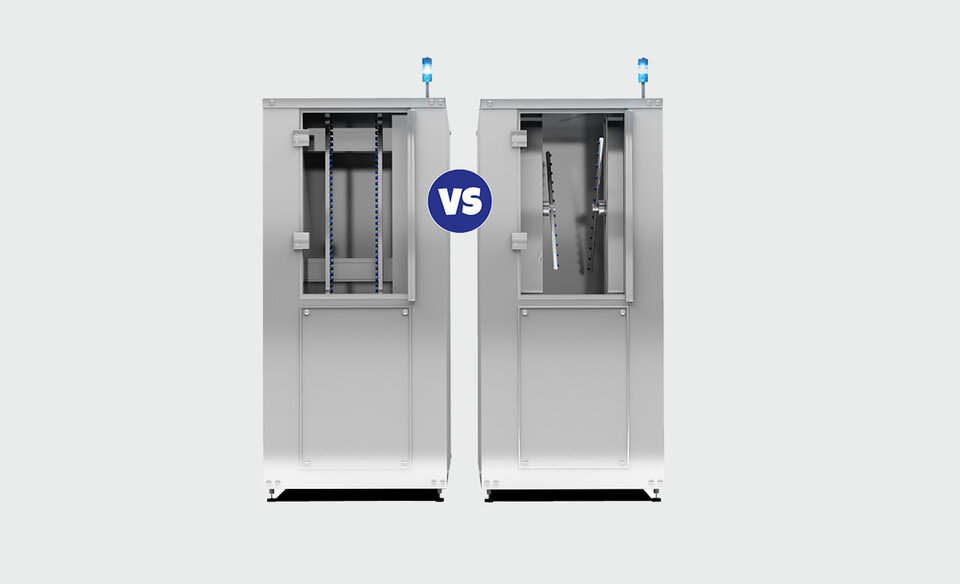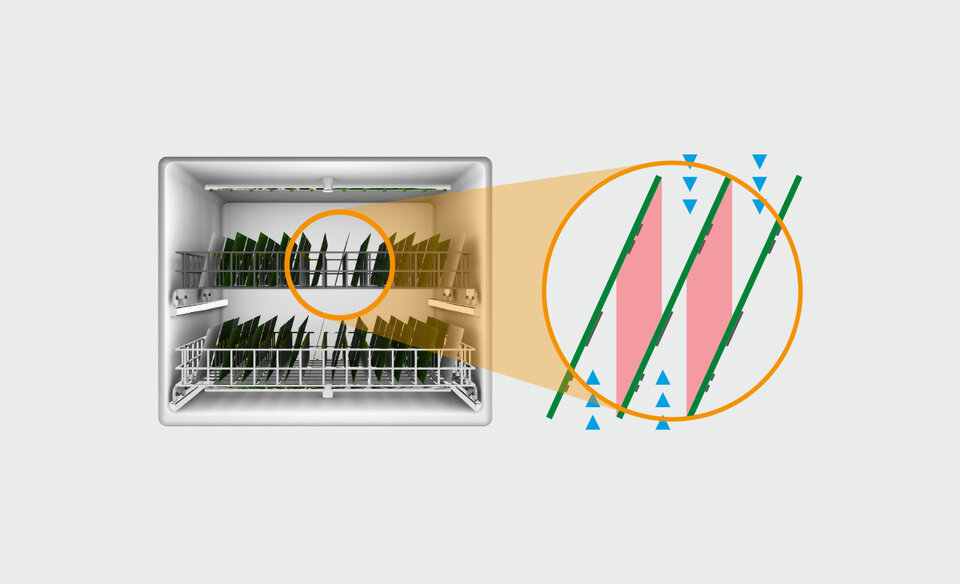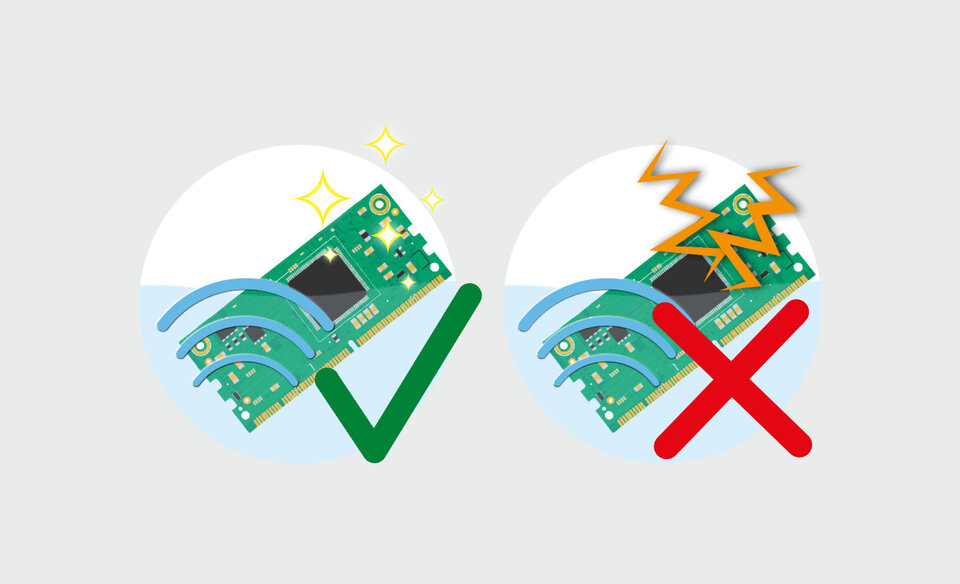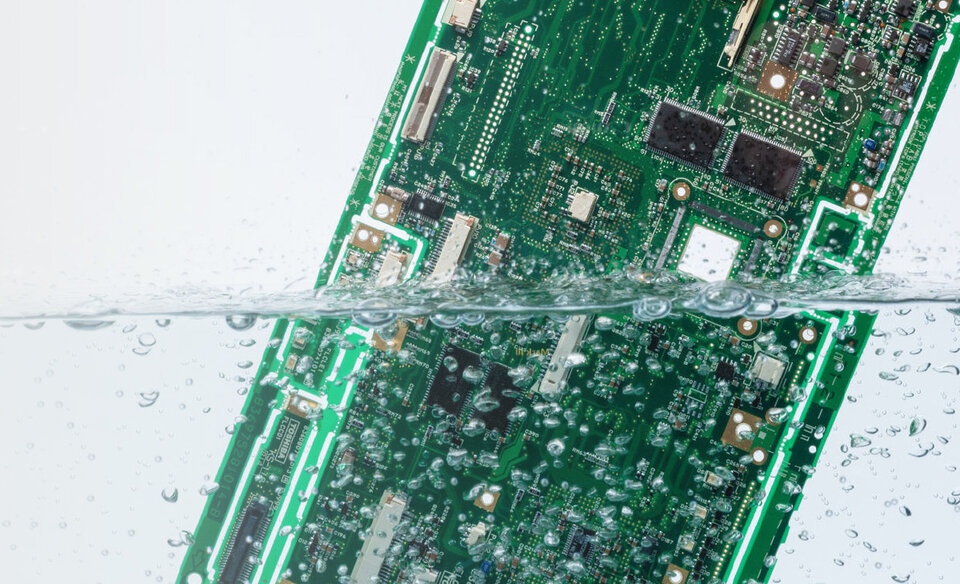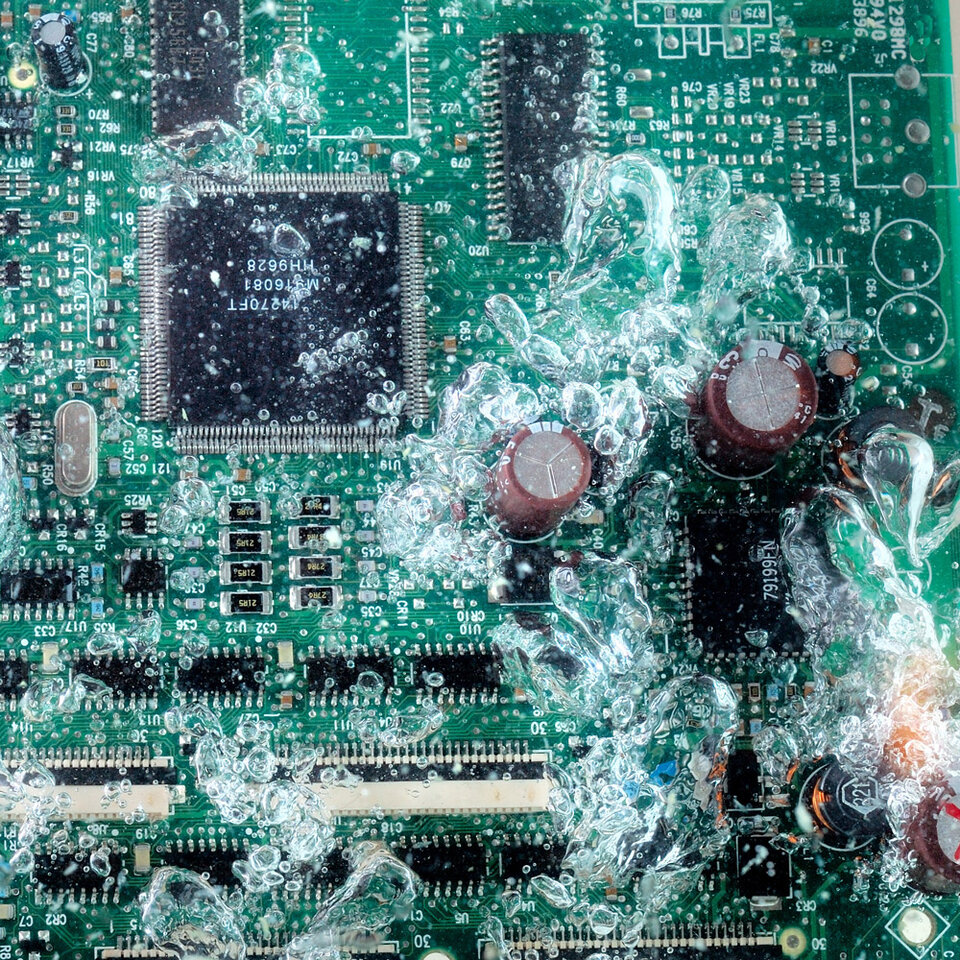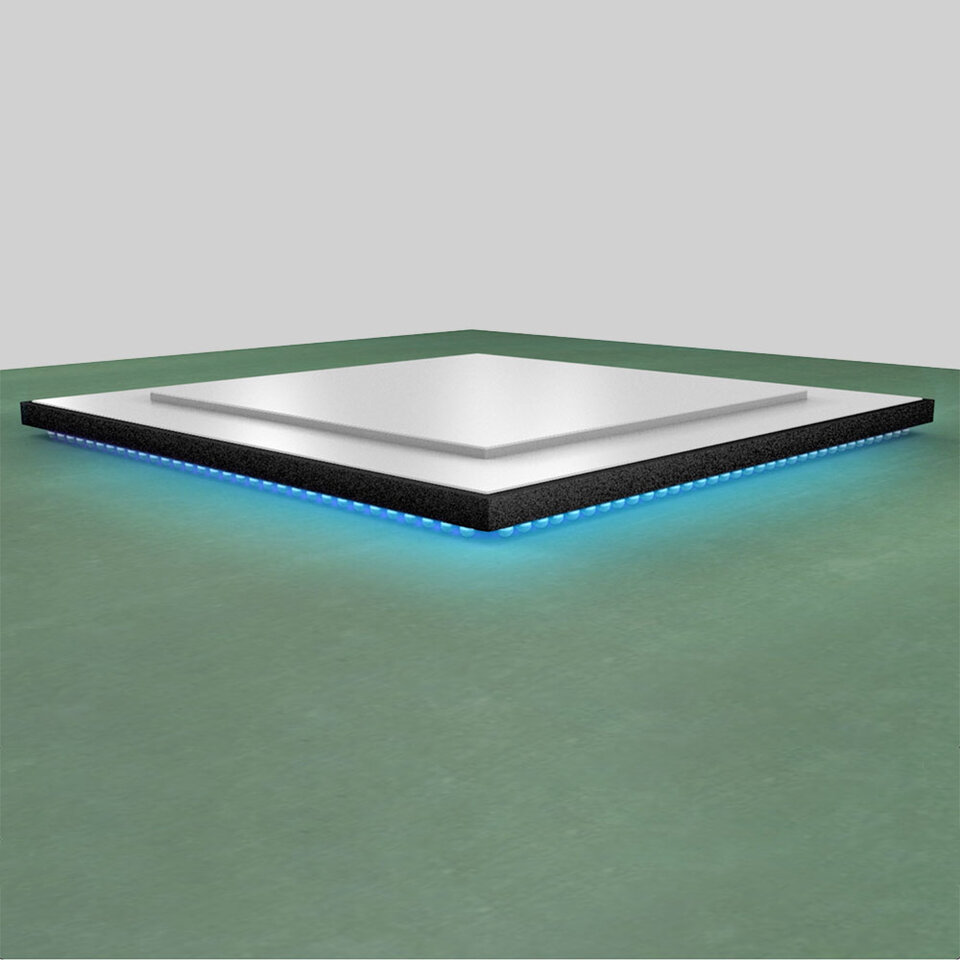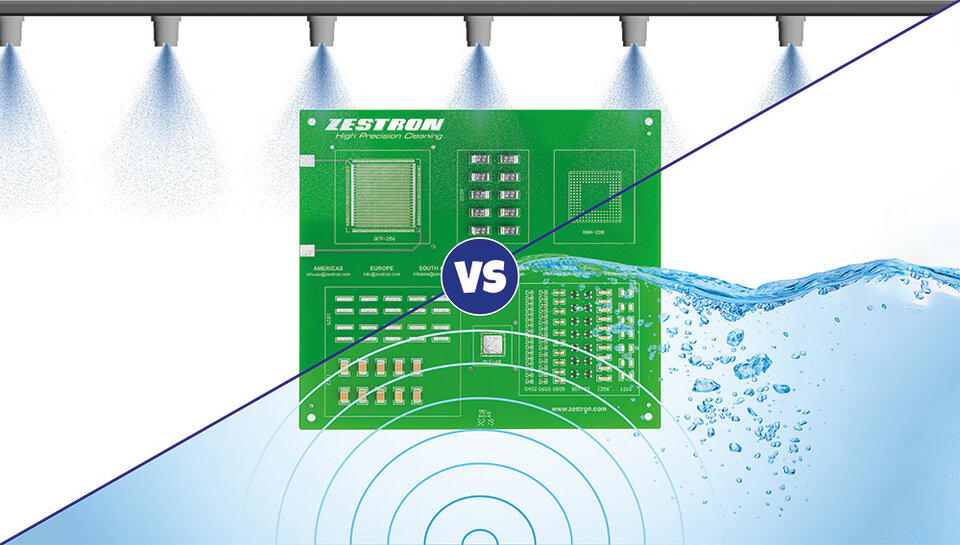Cleaning PCBs - What is more important: Pressure or Flow Rate?
What is relevant for achieving a good Cleaning Result.
Time for a Fact checkPressure and Flow Rate in Spray-in-Air Systems
On the Test Bench: What Is More Important for Cleaning Under Components?
To remove flux residues after soldering, electronic assemblies are usually cleaned by machines. Systems with spray arms that apply the cleaner to the assembly‘s surface are often used for this purpose. So-called spray or spray-in-air systems. A frequently asked question in this context is: What is more important for the cleaning result, especially under components: the pressure of the system or the amount of cleaner that reaches the assembly (flow rate)?
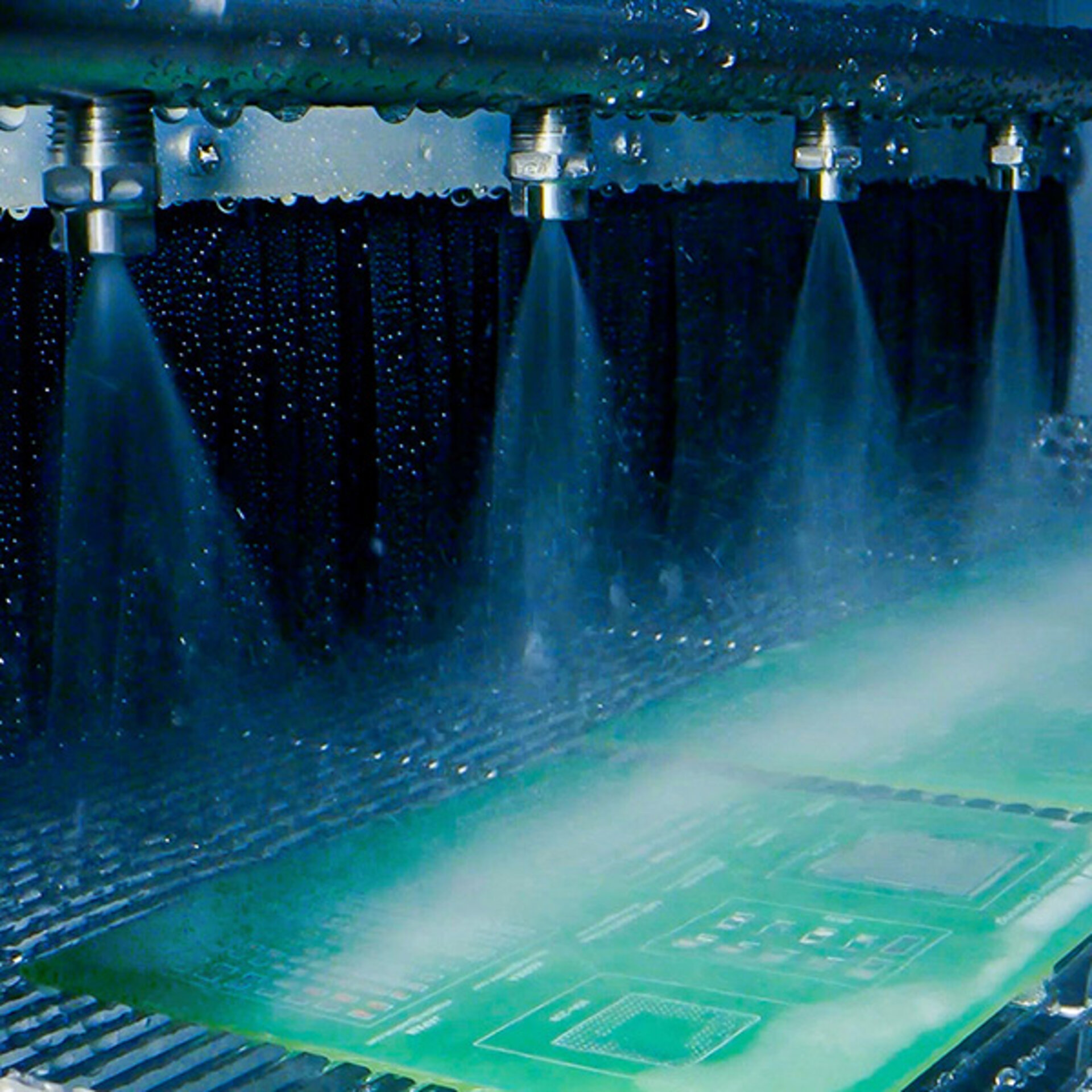
We have done the fact check. You will find out how the two variables of pressure and flow rate are related and which scientific experiments we have used to find out what is decisive for cleaning under components.
Now, Watch the Fact Check in the Video ▼
fact check to readPressure and Flow Rate in Spraying Systems
On the Test Bench: Which Variable Is Decisive for the Cleaning Result Under Components?
1 | The Basic: Pressure and Flow Rate
In order to be able to answer the question about the influence on the cleaning result, one must first take a closer look at pressure and volume flow.
Pressure refers to the force acting vertically on a surface. The volume flow indicates how much medium is transported through a cross-section per unit of time.
In systems for cleaning assemblies, however, a distinction is made between two levels of consideration. On the one hand, there is the cleaning system. There, a pump generates pressure and flow rate. On the other hand, the assembly to be cleaned must be considered. The cleaner hits its surface with a certain pressure and a specific volume flow.
In order to find out how pressure and flow rate are related at system level and assembly level and which parameter is more important for the cleaning result under components, we carried out various tests.
2 | The Scientific Test
Several commercially available spraying systems for cleaning assemblies were tested.
We measured the pump pressure of each cleaning system with a pressure gauge permanently installed in the pumping. The data on the volume flow was taken from the specifications of the respective pump manufacturer.
Specialized measurements in each machine were used to measure the pressure of the cleaner’s impact on the assembly surface as well as the volume of cleaning fluid arriving on the assembly.
In addition, the cleaning performance of the various systems under components was determined. For this purpose, glass boards equipped with different components and standoffs were used, contaminated with a test-contamination and cleaned in the spray-in-air machines.
Finally, pressure and flow rate of each system, as well as the pressure and flow rate on the assembly surface, were related to the performance from the cleaning tests.
3 | The Test Results - But Please Understandable
You would like to know which test results were achieved? Send a request and we will explain in detail and in an understandable way:
-
Details regarding pressure and flow rate and how both variables are related in cleaning systems
-
Whether there is a correlation between pressure and flow rate in the system and on the surface of the assembly
-
Which of the variables has the greater influence on the cleaning result under components
-
What you should look for in terms of pressure and flow rate when selecting a system
